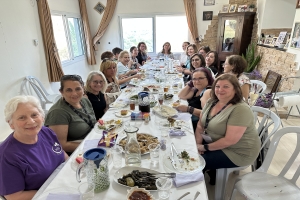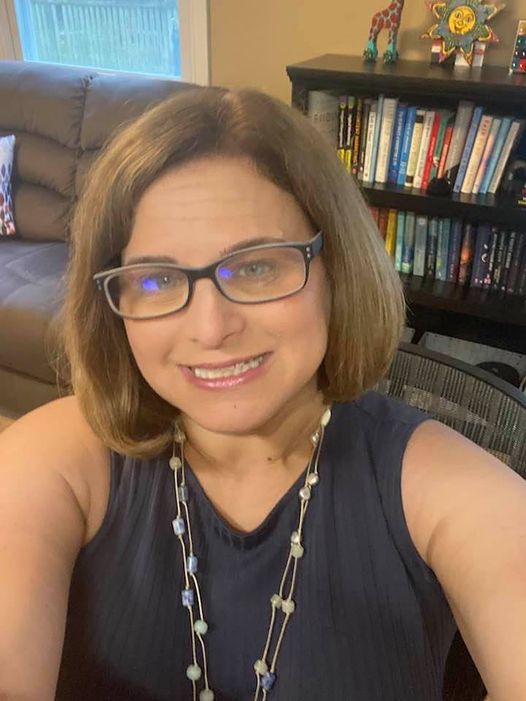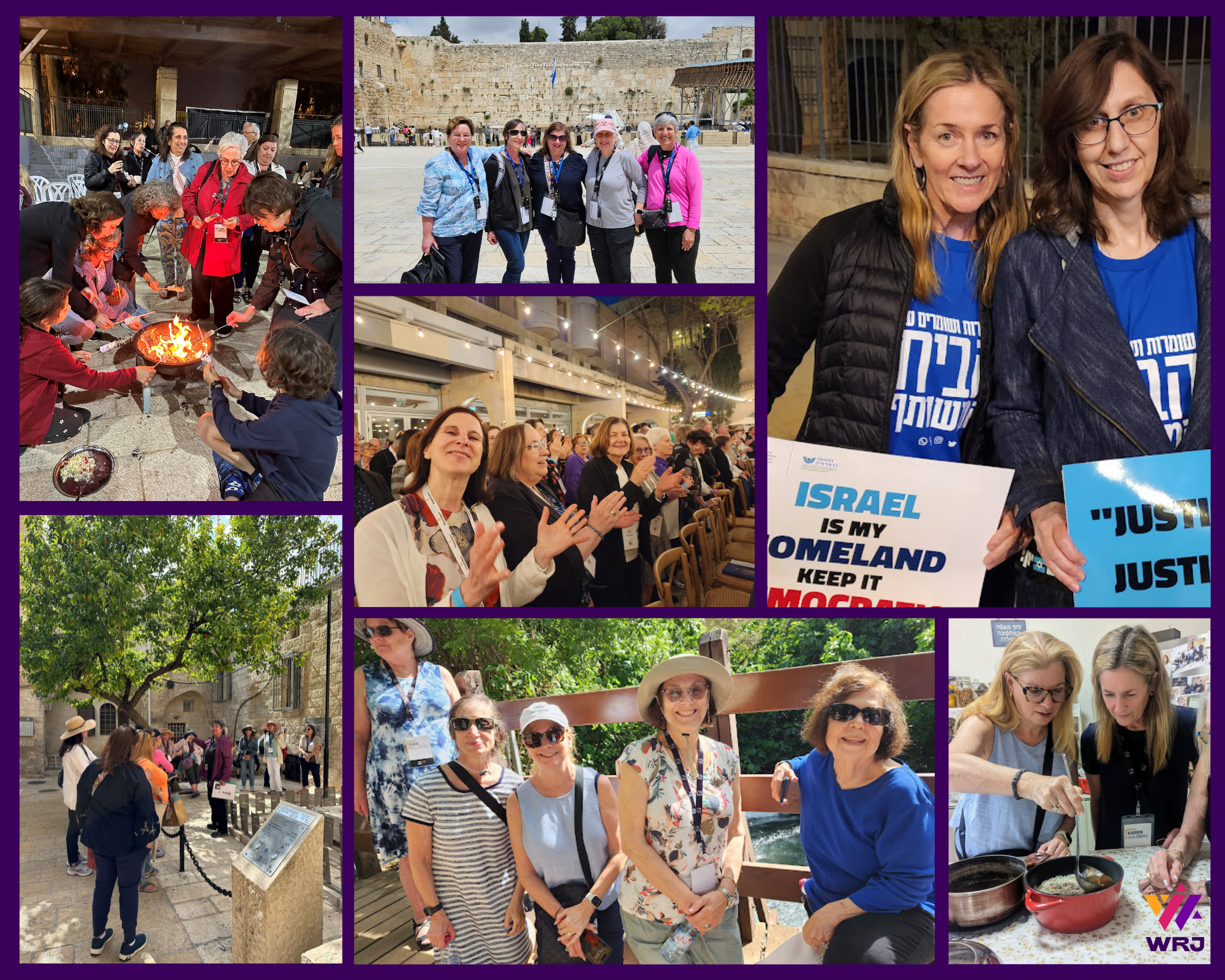
This week, several WRJ women arrived in Israel to tour the country on what we are calling the “Women Off the Beaten Path” journey. They have been sending photos and stories about their adventures all week, and we have been posting them on social media. Here is a complete recap of their travels over the last five days. Thanks to everyone on the trip for sending photos and writing blogs and to WRJ Director of Philanthropy, Shari Schulner, for sending daily recaps. All trip photos can be found on WRJ's Facebook page.
During the first two days, our women explored Jerusalem and met some of WRJ’s YES Fund grantees. Orly Likhovski, executive director at the Israel Religious Action Center (IRAC), spoke to the group about their ongoing work on gender segregation. The organization has fought and won many cases in Israeli court but continues to see instances of women not being allowed in spaces or on public transportation. IRAC is also tackling the ongoing defacement of women on printed materials, in advertising, and in medical offices. Orly wrote about this issue last December on the WRJ blog here. Orly also explained their role in the protests against the government trying to dismantle the judicial system. IRAC has joined this fight by attending and helping organize protests and demanding equality and respect for everyone. WRJ women had the opportunity to attend one of these protests after Shabbat.
The group then walked by Jaffa Gate and spent time reflecting at the Western Wall. They explored the Western Wall Tunnel, the underground continuation of the Kotel, via the Great Bridge tour that goes deeper underground. They also had the option of taking a classic tour that horizontally follows the Western Wall. Everyone had the chance to explore the city with lunch and shopping in the Jewish Quarter. The day ended by celebrating Lag Ba'Omer at Kehilat Kol Haneshama with Rabbi Oded Mazor and enjoying a falafel dinner, a song session, and toasting marshmallows over a bonfire. While at Kol Haneshama, everyone had the opportunity to sign the congregation’s copy of the Israeli Declaration of Independence and express their support for a Jewish and Democratic Israel.
On Day 3, the group started the day with a trip to Yad Vashem. Some people toured the museum, which brings each visitor through the antisemitic tropes that led to Hitler’s rise in power, the war and its impact on Europe and the rest of the world, and the declaration of a state of Israel. WRJ Secretary Karen Goldberg wrote this beautiful reflection and read it to her fellow travelers after their visit to Yad Vashem. The rest of the group explored the grounds with their tour guide, WRJ member Shari Robins, and heard stories about powerful women during that time in our history.
The next stop was HUC’s Jerusalem campus, where WRJ treated the Year-in- Israel rabbinical and cantorial students to lunch. The students were from all over the U.S. People discussed their experience of becoming a rabbi or cantor in our ever-changing world, the impact of their year in Israel (which ends in June), and their hopes and dreams for the future.
From there, we heard from the Israel Movement for Reform and Progressive Judaism’s (IMPJ) CEO Anna Kislanski. Anna shared her personal journey of being a first-generation Israeli after her parents moved to Israel from Moscow. She learned to appreciate Judaism through Israel’s school system and taught her parents about the Jewish holidays. She shared that as a young adult, she heard Jewish prayers being sung for the first time and was enchanted by the melodies. This was her first connection to Reform Judaism. She has watched the Reform Movement evolve in Israel, and now she gets to lead it! In 2009, there were 20 Reform congregations, and now there are 52. She explained how it can be challenging to create a Reform community since the Jewish State supports Orthodoxy, but in partnership with IRAC, they continue to bring legislation (and win!) to provide Reform rabbis with money and resources. She also thanked WRJ for their help with their emergency campaign, so they can sustain and advance their work during the protests.
From here, they stopped at the Machal memorial site where WRJ Board Member Eve Panush shared her father, Nathan Krotinger’s experience traveling to Israel and serving as part of the Machal Overseas volunteers. You can read all about her father’s incredible story here.
Afterward, they visited a new museum, Khan Sha’ar Hagai National Heritage Site. In the heritage center, there were interactive videos where they found themselves in the shoes of the fighters who broke through the road to Jerusalem in 1948. This road was traveled by hundreds of drivers, commanders, fighters, medics, and others, who were trying to bring food and supplies to Jerusalem during the War of Independence. This museum is in memory of the men and women who took part in the effort.
After a long day of touring, everyone spent time in the town of Abu Gosh, where each restaurant argues that they have the best hummus. There are at least 15 restaurants in the area. They dined, family style, at one of the restaurants and can confirm that the hummus was delicious, but felt the need to try all others to rule it the best!
On the fourth day, the group traveled to Haifa to meet with several staff members from Leo Baeck Education Center in Haifa. We also heard from the directors of the Jewish-Arab summer camp, which was awarded several YES Fund grants. (Read more about the program here). A group of students shared about Gender Week at the school, the open dialogue they had with students who had questions, and how they bonded over the experience. The main takeaway from Haifa was that it is a mixed city of Arabs and Jews who have learned to live together, respect each other, learn together, and are working hard to bridge the divide.
The group also heard from Women of the Wall co-founder, Israel Religious Action Center Director, and Israeli activist Anat Hoffman about the ongoing political strife in Israel and how they continue to break barriers by creating a women’s chorus that sings at the Western Wall.
Next up was a visit to Sindyanna of Galilee, where the women learned about their award-winning, fairly-traded olive oil created by Arab women. A portion of the profits goes back to the Arab community for education and leadership programs. Everyone learned about the Middle Eastern spice, Za’atar, how to cook with it, and its healing powers. WRJ North American Board Member Bernice Porrazzo described this experience in her blog post.
For Day 5, fellow traveler Eve Panush shared this recap.
"Today’s program immersed me in the many peoples and cultures who have lived in this ancient land. Our first stop was Tzfat, the home of Jewish mysticism and Kabbalah, where modern artists and famous synagogues crowd each other on the narrow stone streets. I stepped into the Ashkenazi Ari Synagogue from the mid-16th century and stood enthralled at the colorful carved Aron Kodesh. We then traveled to a small town where three different groups of people live—Christian Arabs, Muslim Arabs, and Druze Arabs. There, we were welcomed into the home of a Druze family who have lived in the town for many generations. There, we participated in a culinary adventure—helping to prepare a traditional lunch and then enjoying the tasty food. They kept offering us more and more!
Finally, I returned with some of the group to the lovely Kibbutz Resort in the Galilee Valley, where we are staying, filled with the sound of bird songs and water. The resort is called Hagshorim, and it also has an interesting history. The hotel is founded on the ruins of a winter palace owned by a Bedouin Emir, Mahmoud Fa’ur. He was the head of the Al Fadil tribe that ruled the area since the fall of the Ottoman regime. The Emir lost his fortune and sold the land to JNF. The kibbutz was founded in 1948 on the land of the village of Al-Khisas. The villagers worked as farmers for the Emir.
Al-Khisas was selected, in 1947, as one of several towns, as a target for a Haganah operation, in which leaflets were dropped to tell the villagers that if they are not participating in the war, they will not have to leave the village. However, in December 1947, the Palmach (an underground army) conducted a raid on the town, resulting in many casualties. Ben-Gurion said the raid was unauthorized and local leaders tried to prevent the raid but were overridden by Yigal Allon. As a result, some villagers left, and others who stayed were evicted. The kibbutz was established in 1948 by Jewish immigrants from Turkey. The land we visited today was the site of many different peoples and cultures."
Thanks for following our adventures on the WRJ blog and our Facebook page. Please check out our photo album for more of our experience, and feel free to tag yourselves in the album.
Related Posts
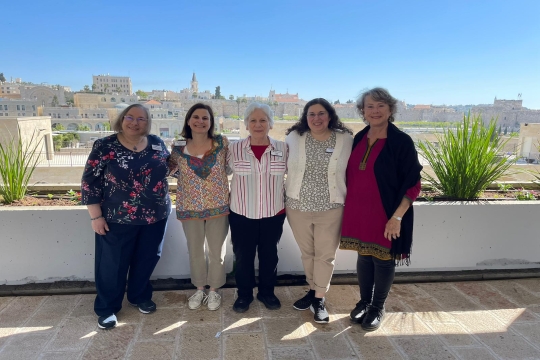
Connecting with Women from Around the World
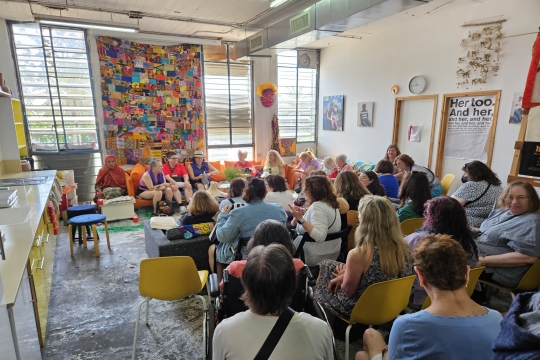
Learning & Traveling with WRJ
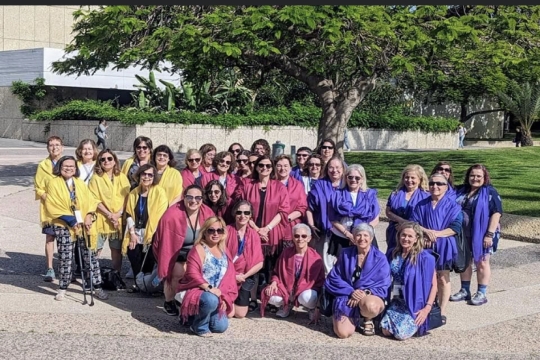

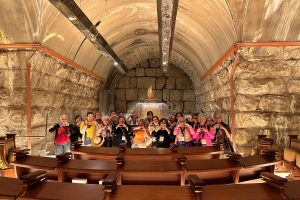
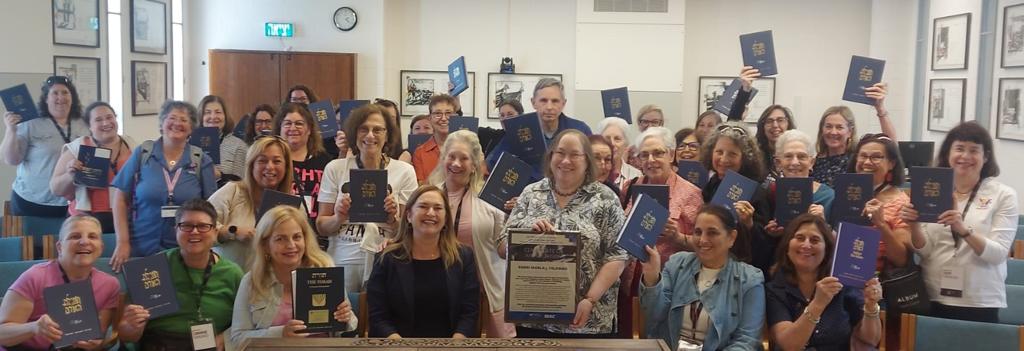
9cf1.jpg)
